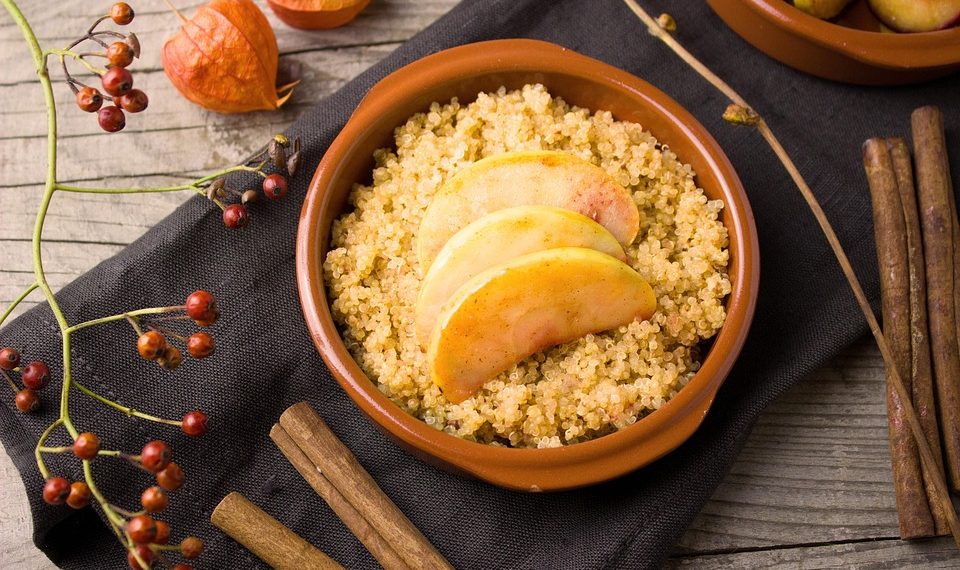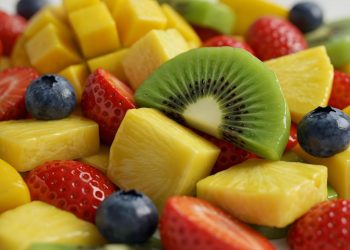Did you know that quinoa is often referred to as a “superfood”? While that term gets thrown around a lot these days, there’s actually a solid reason behind it: quinoa is packed with nutrients and has a low glycemic index, making it a fantastic choice for stabilizing blood sugar levels. If you’re looking to manage your blood sugar—whether you have diabetes or just want to maintain steady energy throughout the day—incorporating quinoa into your meals can be a game changer.
Let’s dive into five delicious quinoa recipes that not only taste great but can also help you keep your blood sugar in check.
Contents
1. Quinoa and Black Bean Salad
Why It Works
Combining quinoa with black beans offers a powerhouse of protein and fiber, both of which help slow the absorption of sugar into the bloodstream. This means you’ll feel fuller longer, and your blood sugar won’t spike as dramatically after a meal.
Ingredients
- 1 cup cooked quinoa
- 1 can black beans, rinsed and drained
- 1 bell pepper, diced
- 1 small red onion, diced
- 1 cup corn (fresh, frozen, or canned)
- Fresh cilantro, chopped
- Juice of 1 lime
- Salt and pepper to taste
Directions
- In a large bowl, combine the cooked quinoa, black beans, bell pepper, red onion, and corn.
- Drizzle with lime juice and sprinkle with salt and pepper.
- Toss everything together until well mixed.
- Garnish with fresh cilantro before serving.
Pros and Cons
While this salad is nutrient-dense, be cautious with added dressings or toppings that might contain sugars. Stick to natural ingredients for the best results.
2. Quinoa Vegetable Stir-Fry
Why It Works
Stir-fries are a quick way to pack in a variety of vegetables, and quinoa provides the perfect base. The fiber from the veggies combined with quinoa’s protein helps keep blood sugar levels steady.
Ingredients
- 1 cup cooked quinoa
- 2 cups mixed vegetables (broccoli, bell peppers, carrots, snap peas)
- 1 tablespoon olive oil
- 2 cloves garlic, minced
- 1 tablespoon soy sauce or tamari (for a gluten-free option)
- Optional: sesame seeds for garnish
Directions
- Heat olive oil in a large skillet over medium heat.
- Add garlic and sauté for about a minute.
- Toss in the mixed vegetables and cook until tender.
- Stir in the cooked quinoa and soy sauce, mixing everything well.
- Serve hot, garnished with sesame seeds if desired.
Pros and Cons
While this dish is quick and versatile, be mindful of the sodium content in soy sauce. Opt for low-sodium versions if you’re watching your salt intake.
3. Quinoa Breakfast Bowl
Why It Works
Breakfast is a crucial meal for stabilizing blood sugar levels throughout the day, and a quinoa breakfast bowl can be a hearty start. Packed with protein and healthy fats, this dish can help you avoid mid-morning crashes.
Ingredients
- 1/2 cup cooked quinoa
- 1/2 cup unsweetened almond milk (or any milk of choice)
- 1 tablespoon almond butter (or peanut butter)
- 1/2 banana, sliced
- 1 tablespoon chia seeds
- Cinnamon to taste
Directions
- In a small saucepan, combine the cooked quinoa and almond milk. Heat until warm.
- Stir in the almond butter and cinnamon until well mixed.
- Top with banana slices and chia seeds before serving.
Pros and Cons
This breakfast is filling and nutritious, but be cautious with portion sizes if you’re counting calories. Almond butter can be calorie-dense, so a tablespoon goes a long way.
4. Quinoa Stuffed Bell Peppers
Why It Works
Stuffed bell peppers are not only visually appealing but also a great way to incorporate more veggies into your diet. The fiber from both the quinoa and the peppers can help regulate blood sugar levels.
Ingredients
- 4 large bell peppers (any color)
- 1 cup cooked quinoa
- 1 can diced tomatoes
- 1 teaspoon cumin
- 1 teaspoon chili powder
- 1/2 cup shredded cheese (optional)
- Salt and pepper to taste
Directions
- Preheat your oven to 375°F (190°C).
- Cut the tops off the bell peppers and remove the seeds.
- In a bowl, mix the cooked quinoa, diced tomatoes, cumin, chili powder, salt, and pepper.
- Stuff each bell pepper with the quinoa mixture and place them in a baking dish.
- If using cheese, sprinkle it on top of the stuffed peppers.
- Cover with foil and bake for 30 minutes, then remove the foil and bake for an additional 10 minutes.
Pros and Cons
This dish is colorful and satisfying, but be wary of using too much cheese, as it can add extra calories and fat.
5. Quinoa and Lentil Soup
Why It Works
Lentils are a fantastic source of protein and fiber, making them a great partner for quinoa. This hearty soup can keep you full and provide a steady release of energy throughout the day.
Ingredients
- 1 cup cooked quinoa
- 1 cup lentils (green or brown)
- 1 onion, diced
- 2 carrots, diced
- 2 celery stalks, diced
- 4 cups vegetable broth
- 1 teaspoon thyme
- Salt and pepper to taste
Directions
- In a large pot, sauté the onion, carrots, and celery until soft.
- Add the lentils, vegetable broth, thyme, salt, and pepper, and bring to a boil.
- Reduce heat and let it simmer until the lentils are tender (about 20-30 minutes).
- Stir in the cooked quinoa before serving.
Pros and Cons
While this soup is incredibly nutritious, it’s important to note that lentils can cause bloating in some people. If that’s you, try soaking them overnight before cooking.
FAQs
1. Is quinoa good for blood sugar control?
Yes! Quinoa has a low glycemic index and is high in fiber, which helps stabilize blood sugar levels.
2. Can I eat quinoa if I have diabetes?
Absolutely! Quinoa can be a healthy part of a diabetes-friendly diet, but portion control is important.
3. How can I incorporate more quinoa into my meals?
You can use quinoa in salads, soups, as a side dish, or even in breakfast bowls. The possibilities are endless!
4. What are the nutritional benefits of quinoa?
Quinoa is high in protein, fiber, vitamins, and minerals, making it a nutrient-dense food that supports overall health.
Conclusion
Incorporating quinoa into your meals is not just delicious; it’s a smart choice for stabilizing blood sugar levels. These five recipes offer a variety of ways to enjoy this superfood while ensuring you’re nourishing your body. Whether you’re whipping up a quick breakfast or preparing a hearty dinner, quinoa can fit seamlessly into your routine.
Remember, managing your blood sugar is a journey, and making small changes can lead to significant improvements in your overall health. So why not give these recipes a try? Your taste buds—and your blood sugar—will thank you!
This article is for educational purposes only and is not a substitute for professional medical advice. Always consult a qualified healthcare provider before making changes to your health routine.
References
-
Hu, F. B., & Willett, W. C. (2002). The Epidemiology of Diabetes and its Cardiovascular Implications. Journal of the American College of Cardiology, 39(5), 743-753. https://doi.org/10.1016/S0735-1097(01)01774-2
-
Slavin, J. L. (2005). Why Whole Grains Are Important. Journal of Nutrition, 135(5), 1190-1192. https://doi.org/10.1093/jn/135.5.1190
-
Mayo Clinic. (2021). Quinoa: Health Benefits and Nutrition. Retrieved from https://www.mayoclinic.org/healthy-lifestyle/nutrition-and-healthy-eating/in-depth/quinoa/art-20045941
-
Harvard Health Publishing. (2020). The Benefits of a High-Fiber Diet. Retrieved from https://www.health.harvard.edu/staying-healthy/the-benefits-of-a-high-fiber-diet
Get Your FREE Natural Health Guide!
Subscribe now and receive our exclusive ebook packed with natural health tips, practical wellness advice, and easy lifestyle changes — delivered straight to your inbox.














